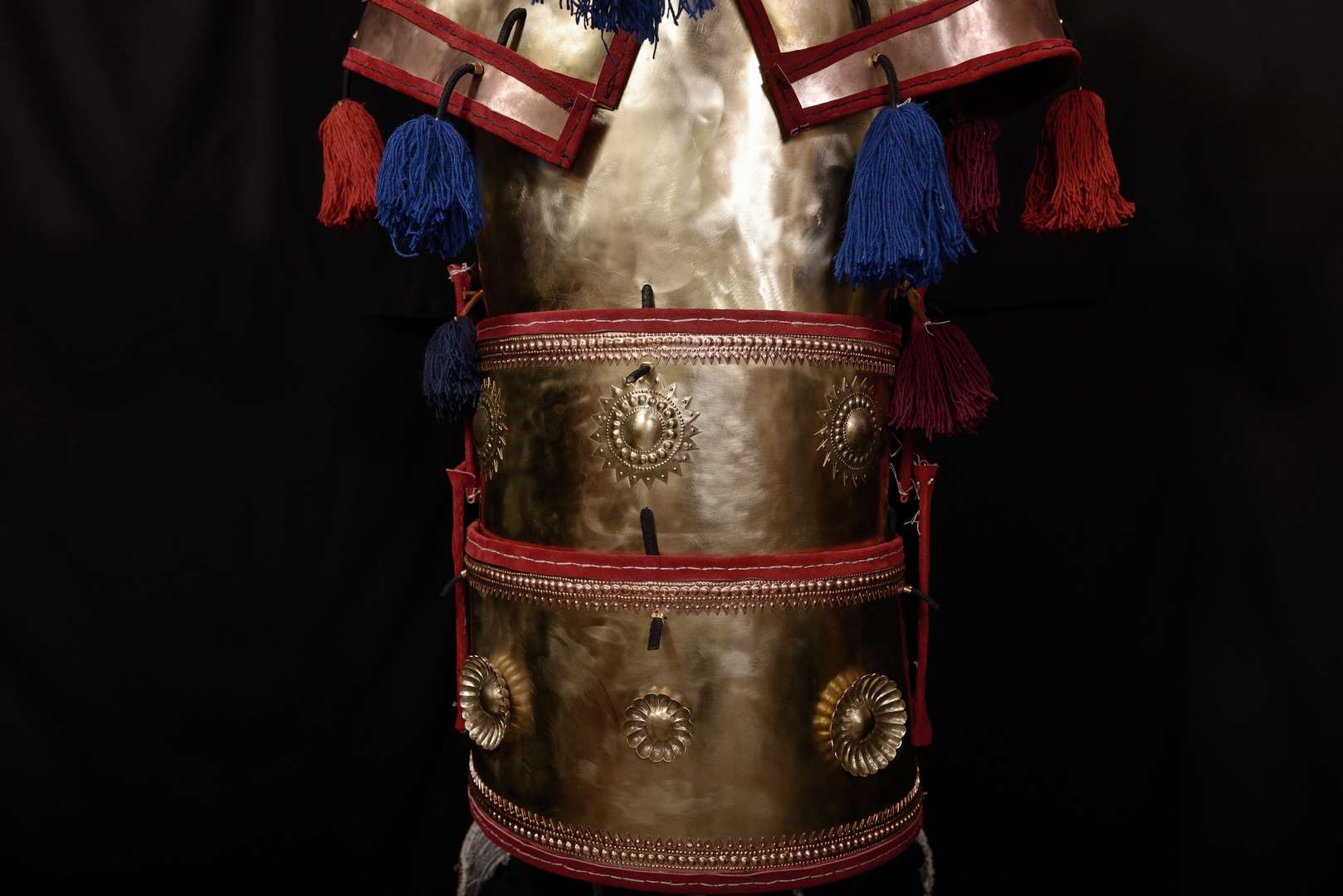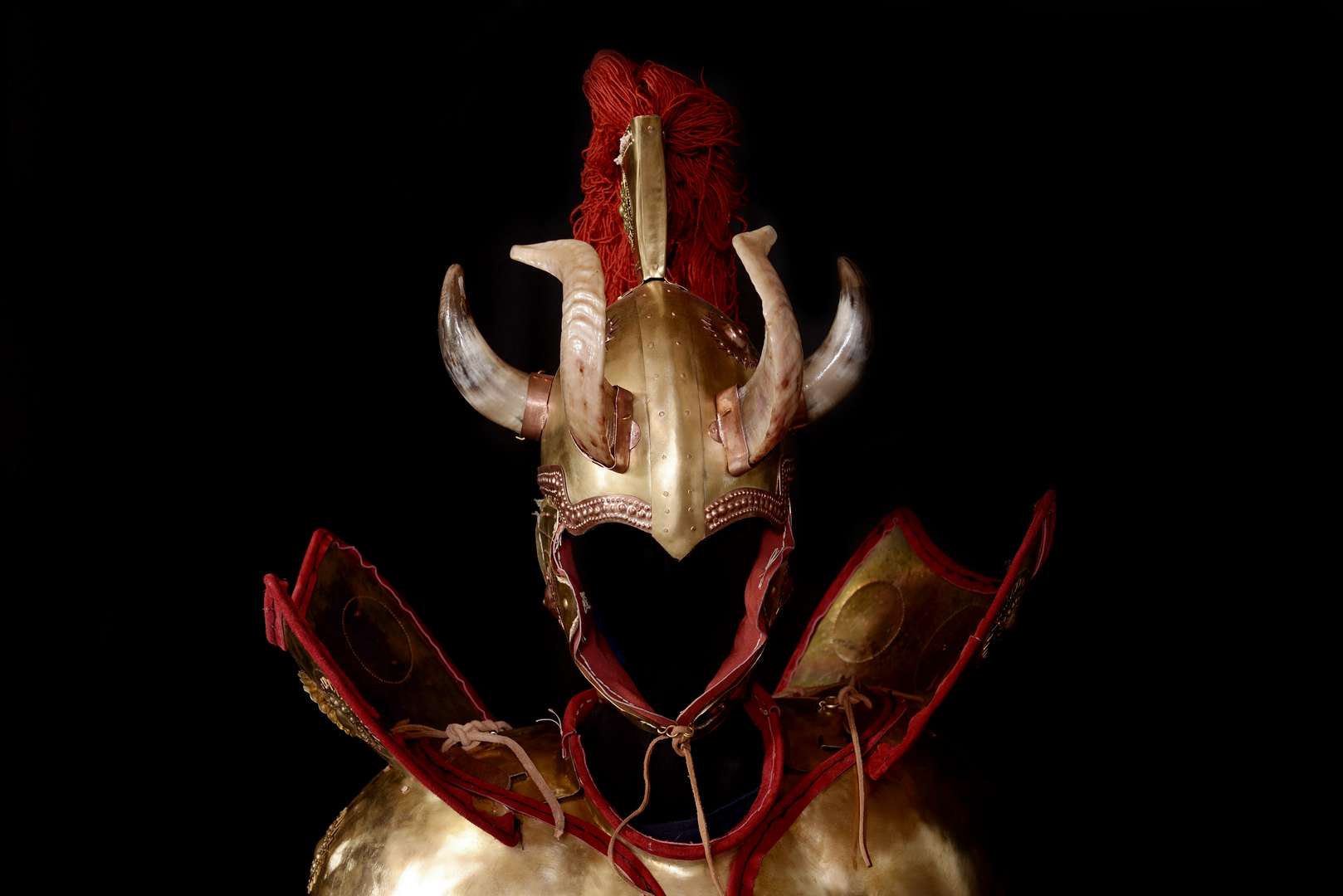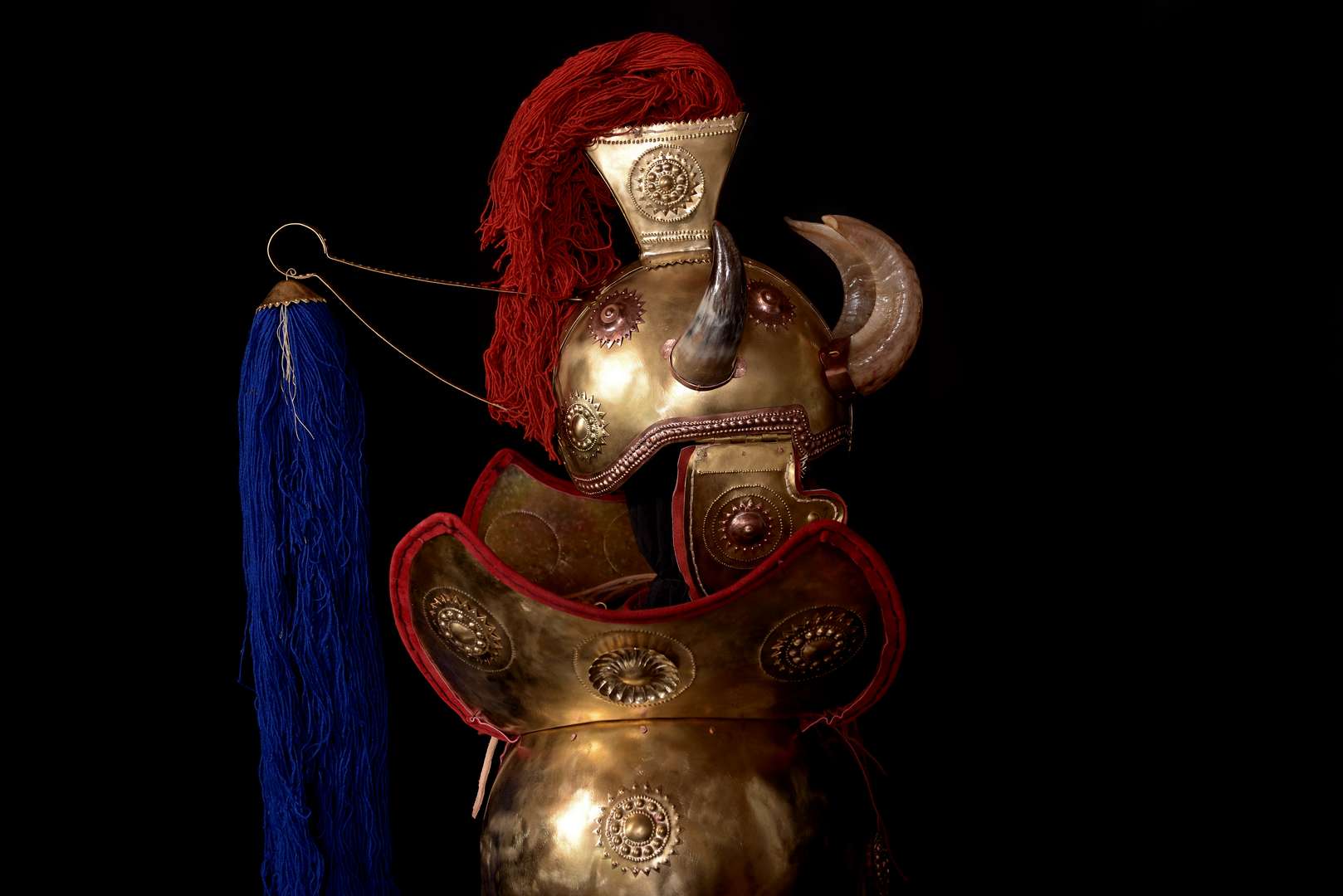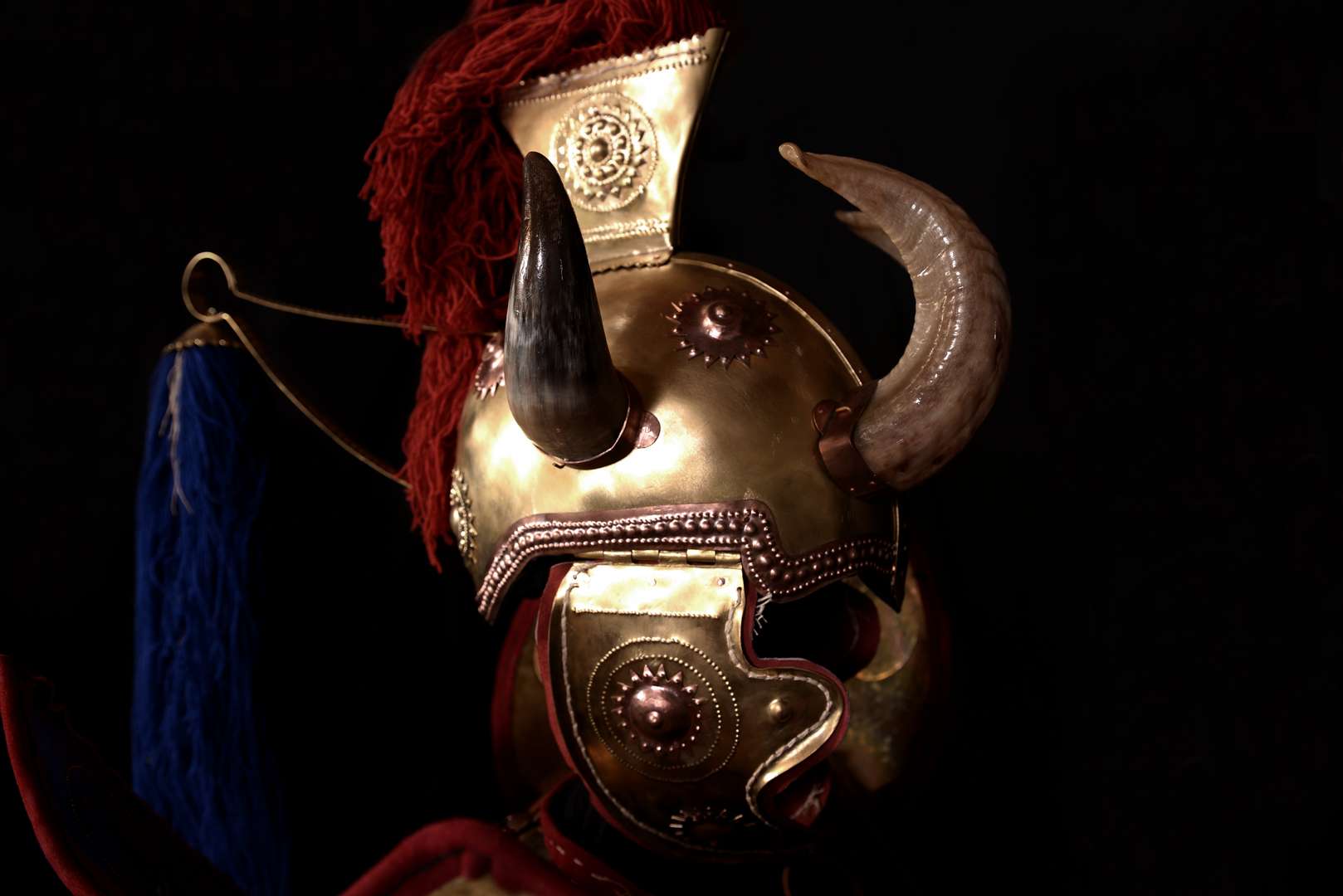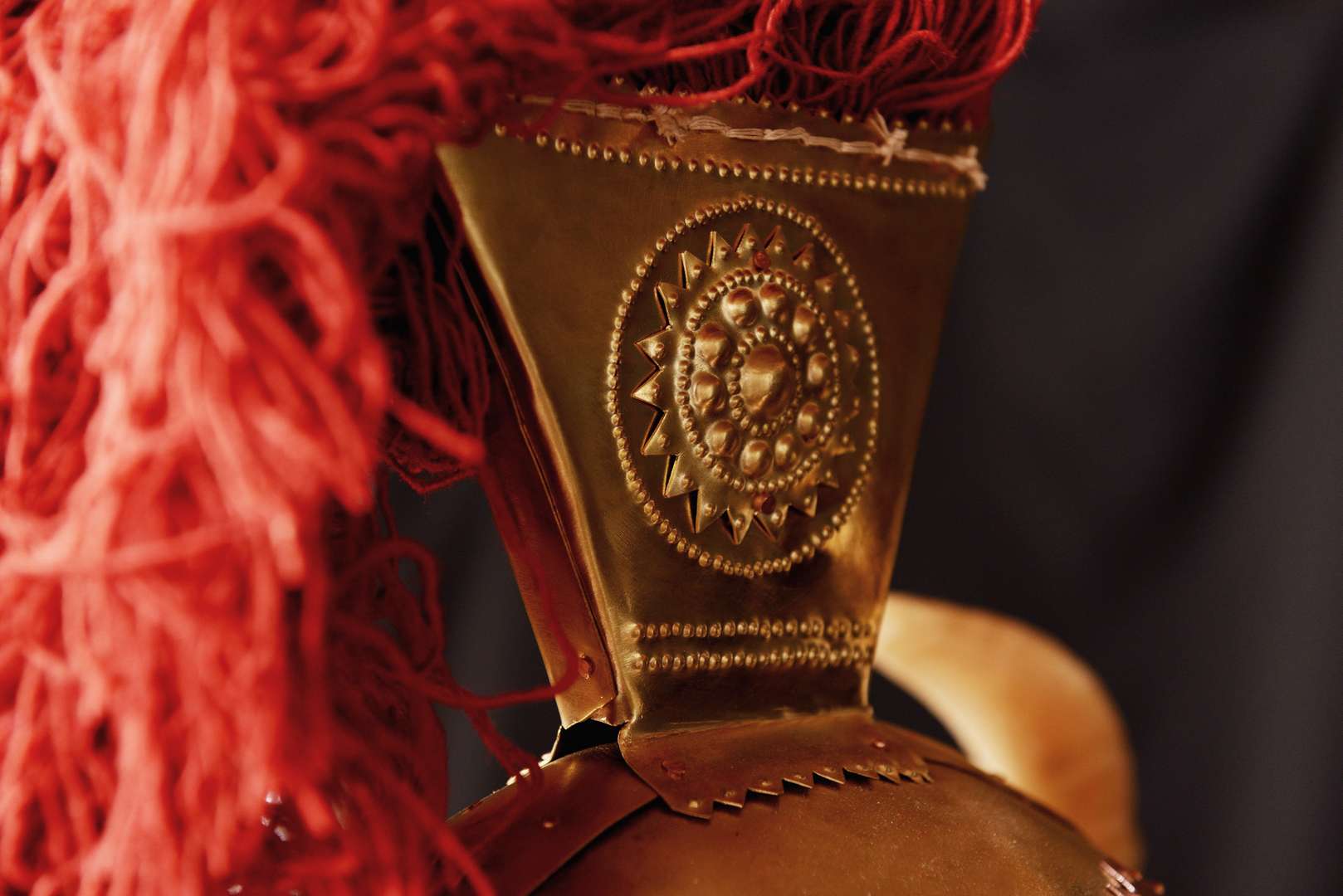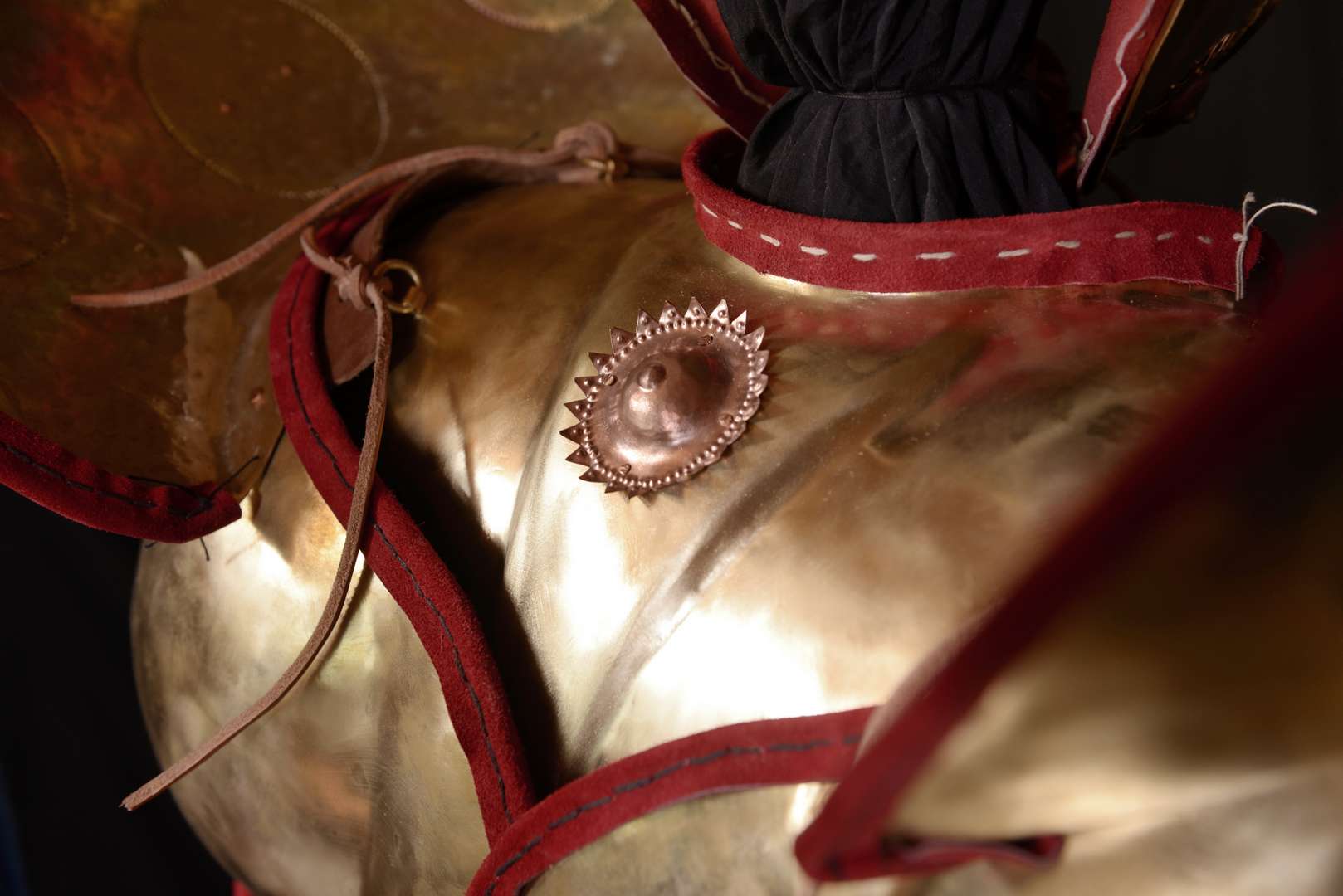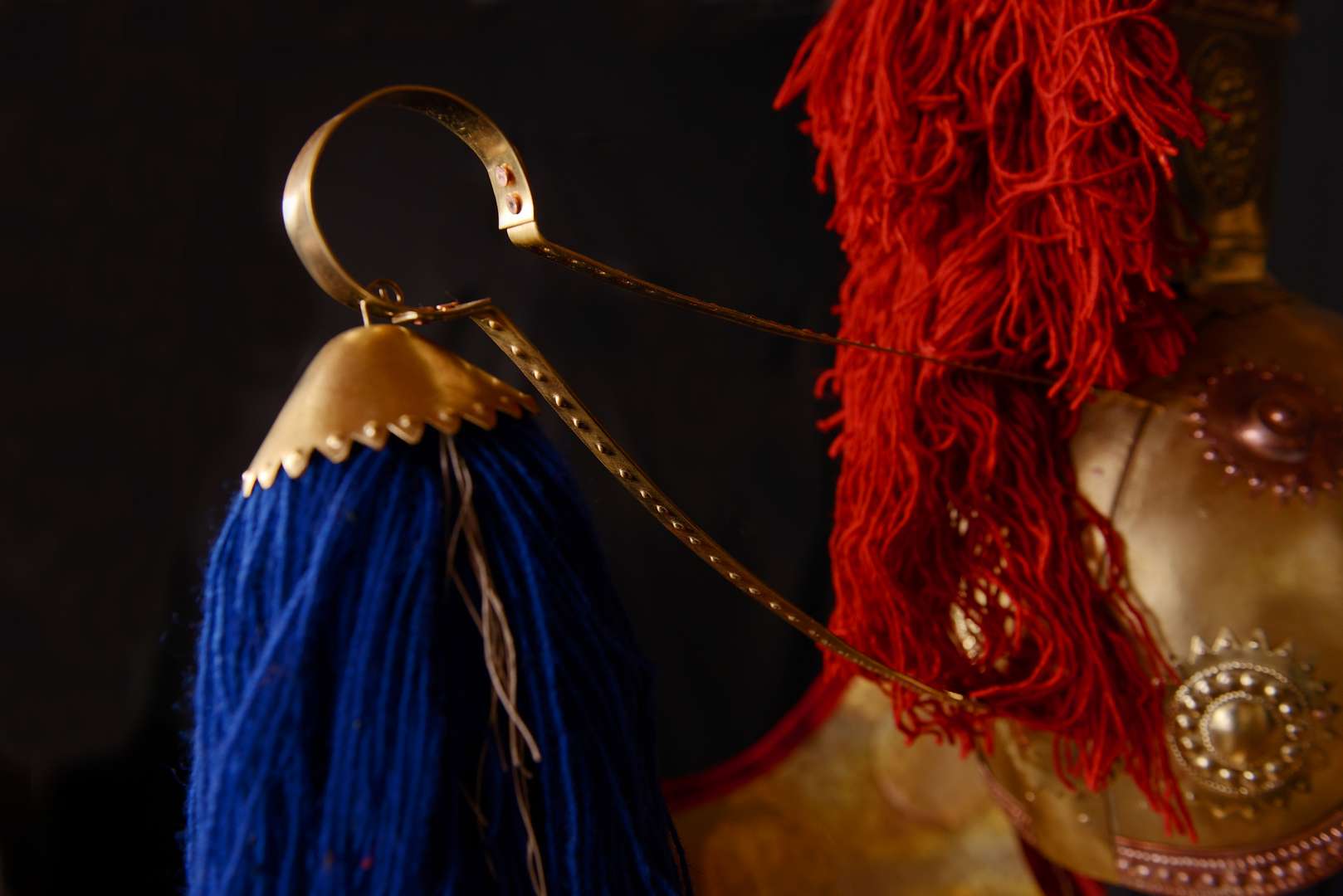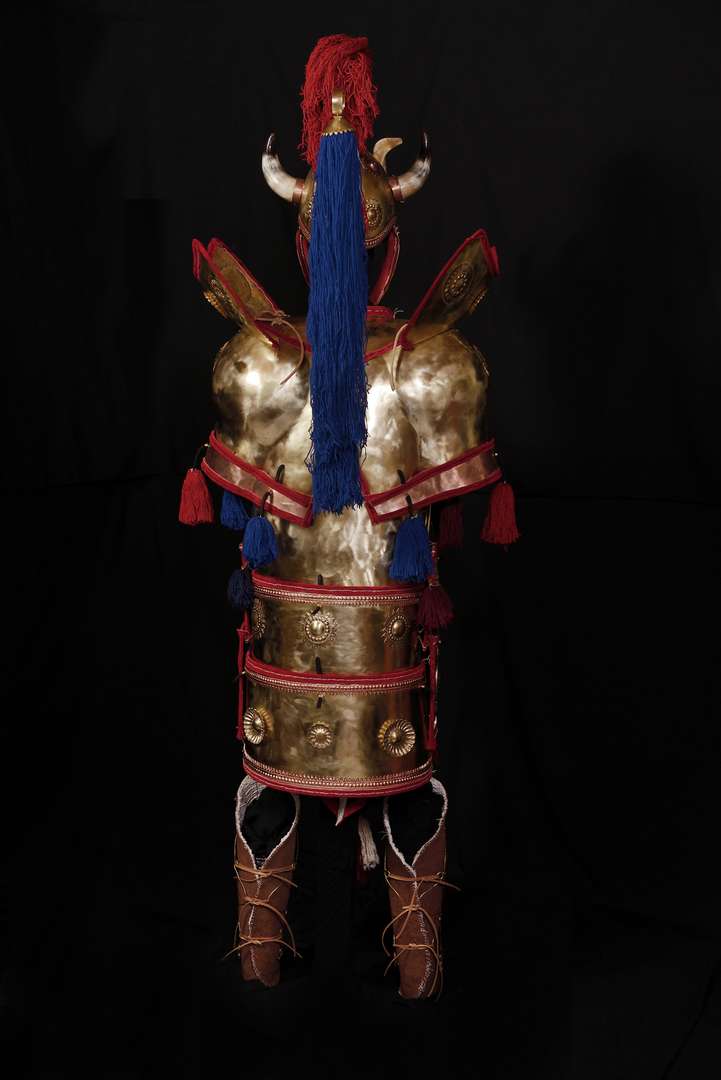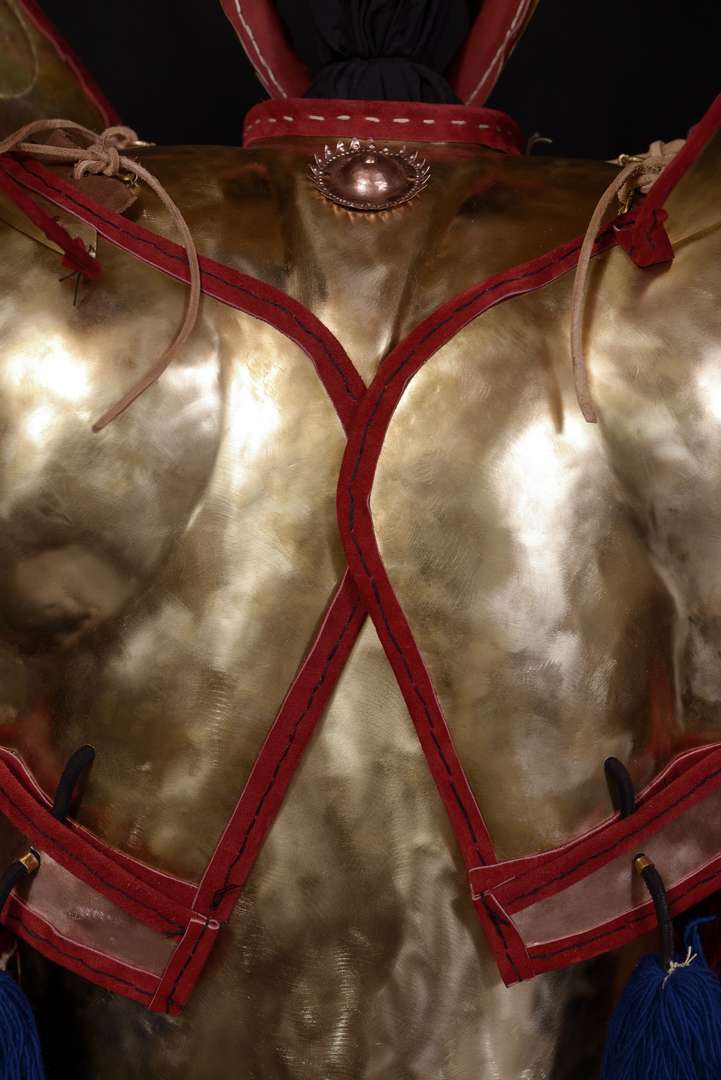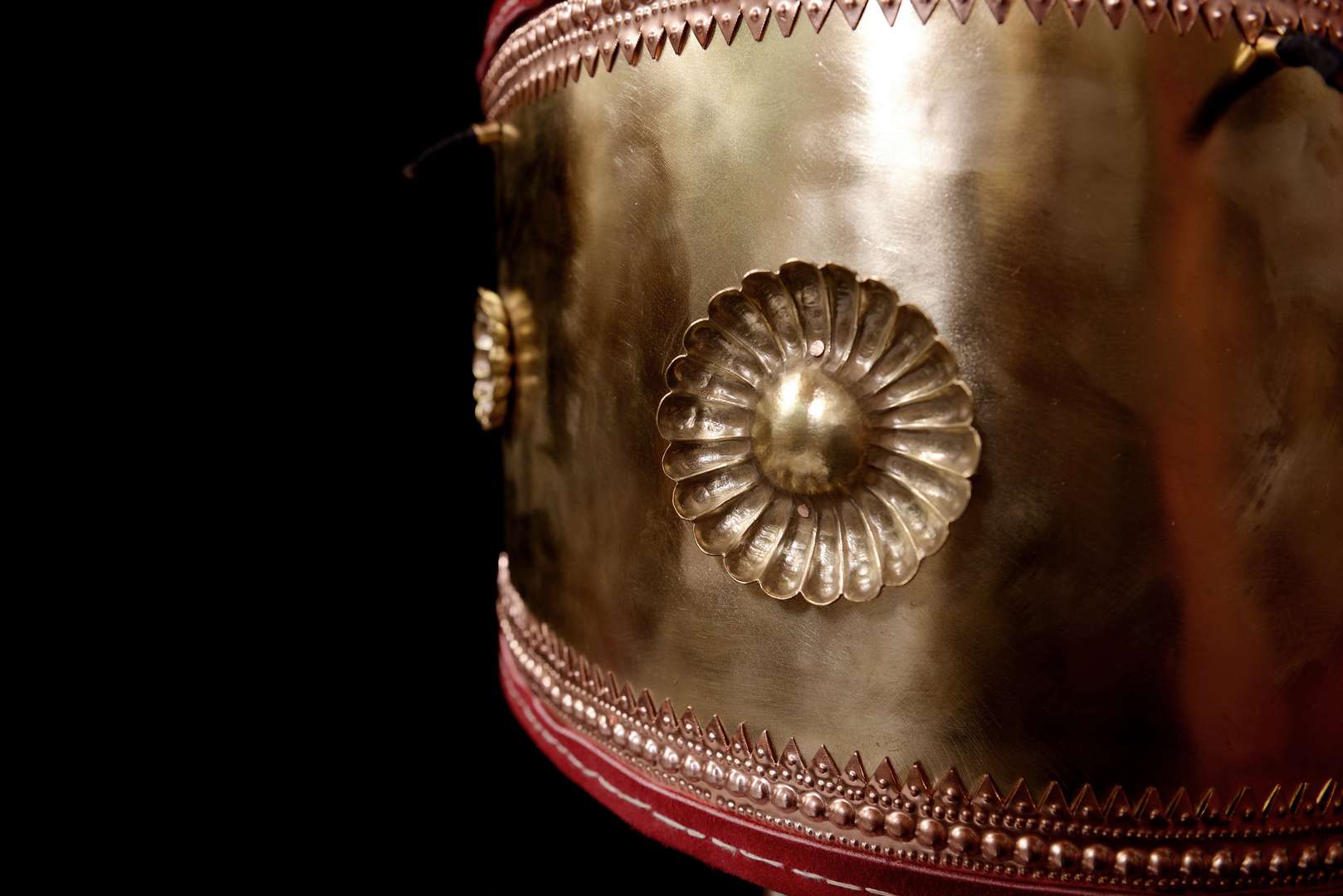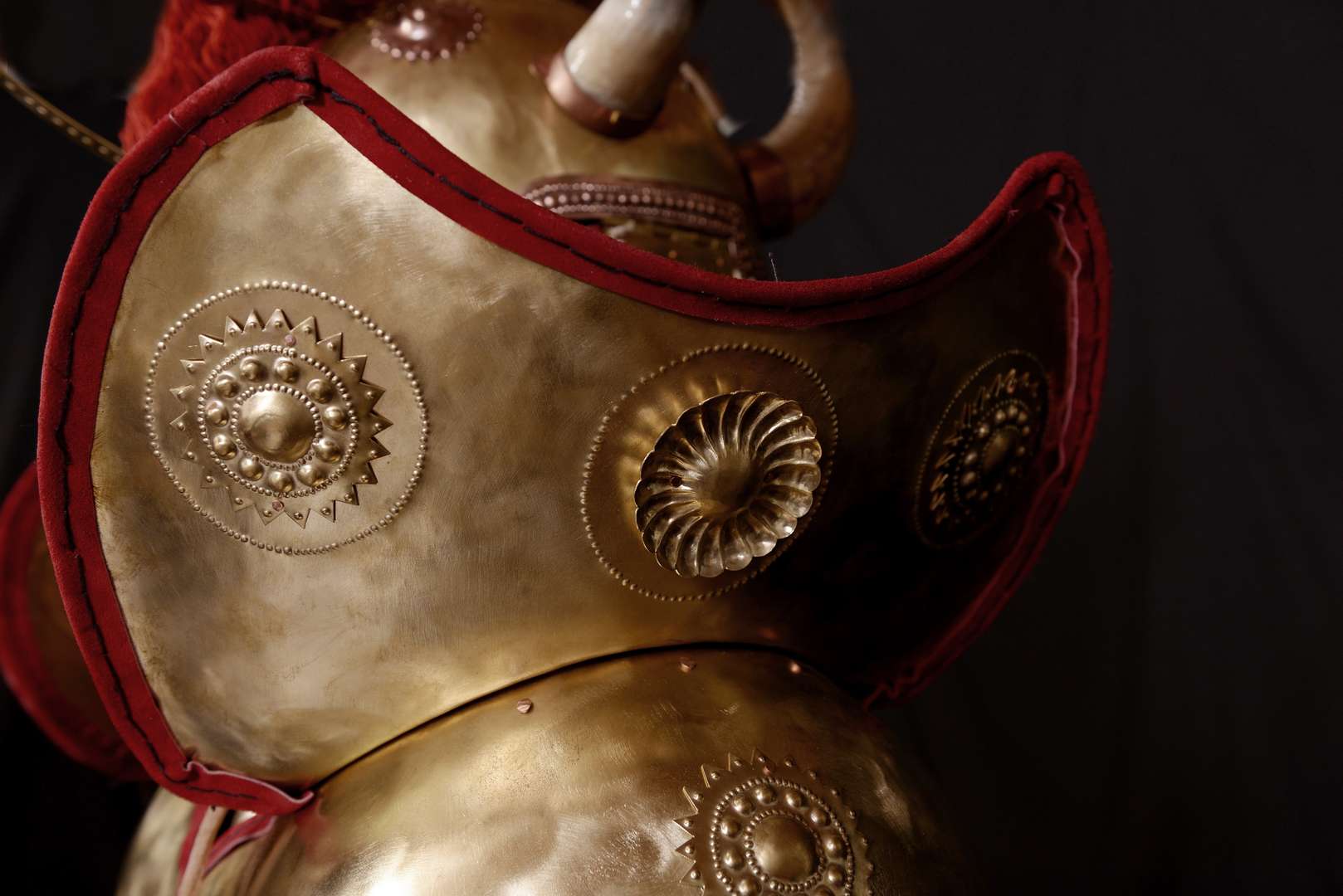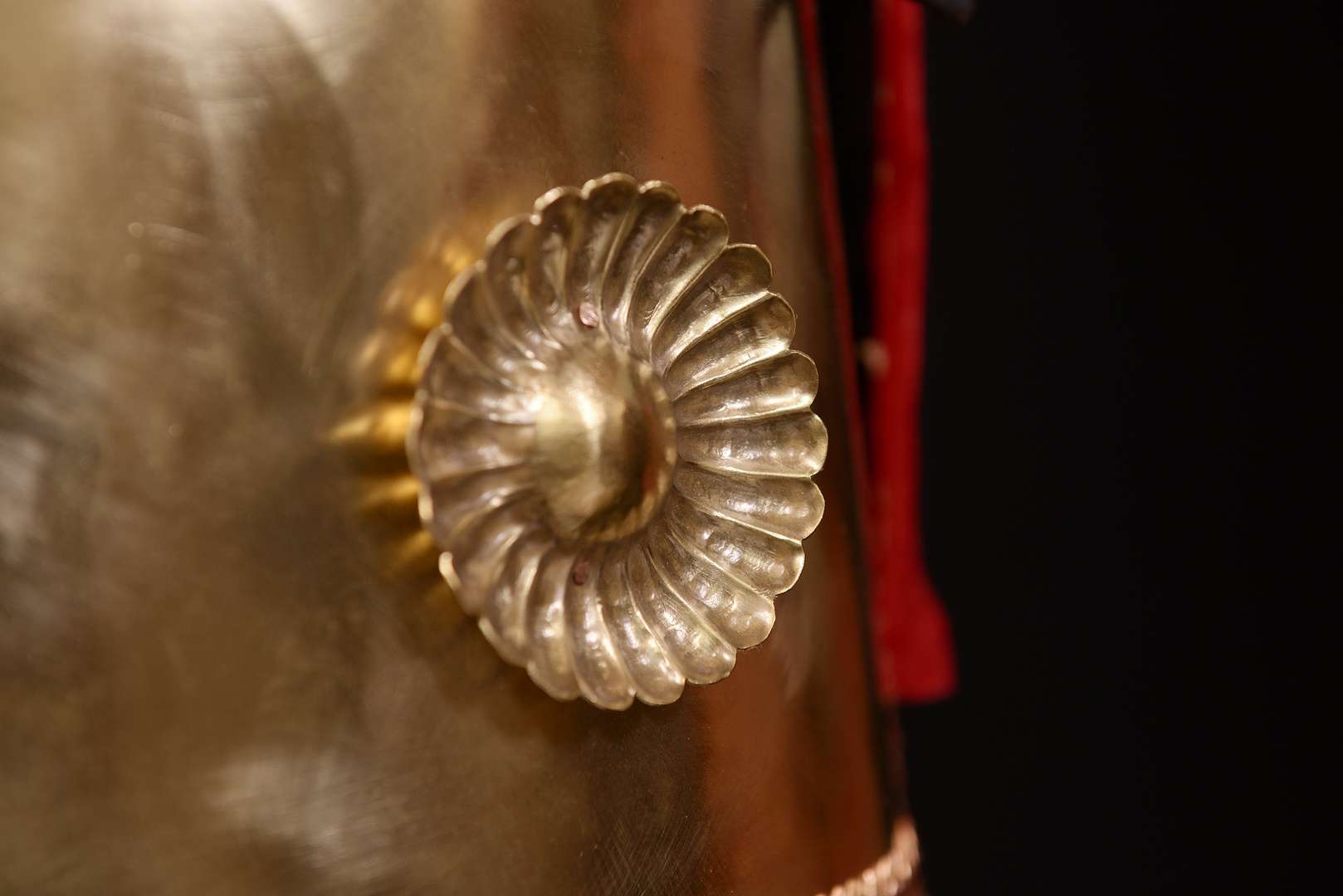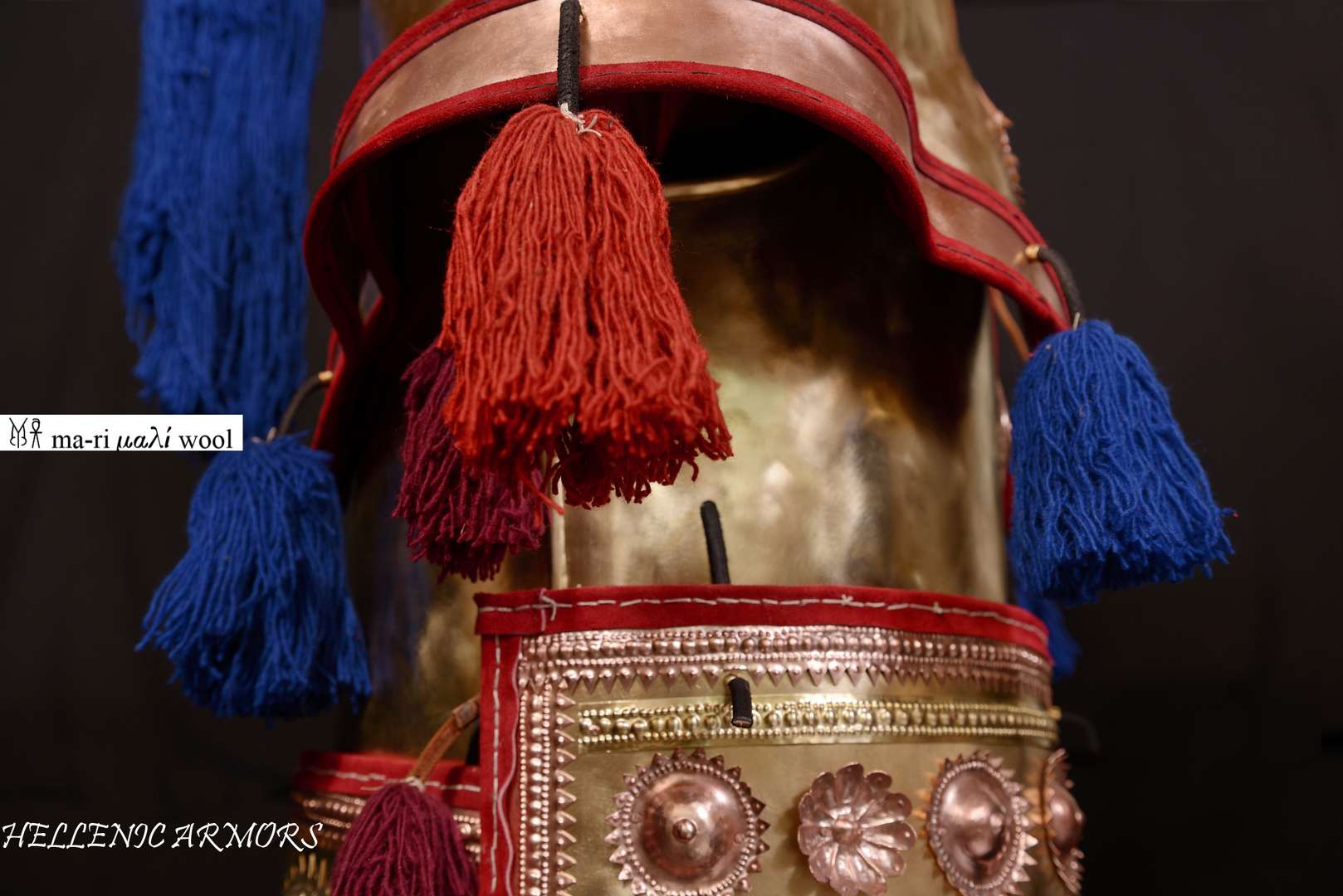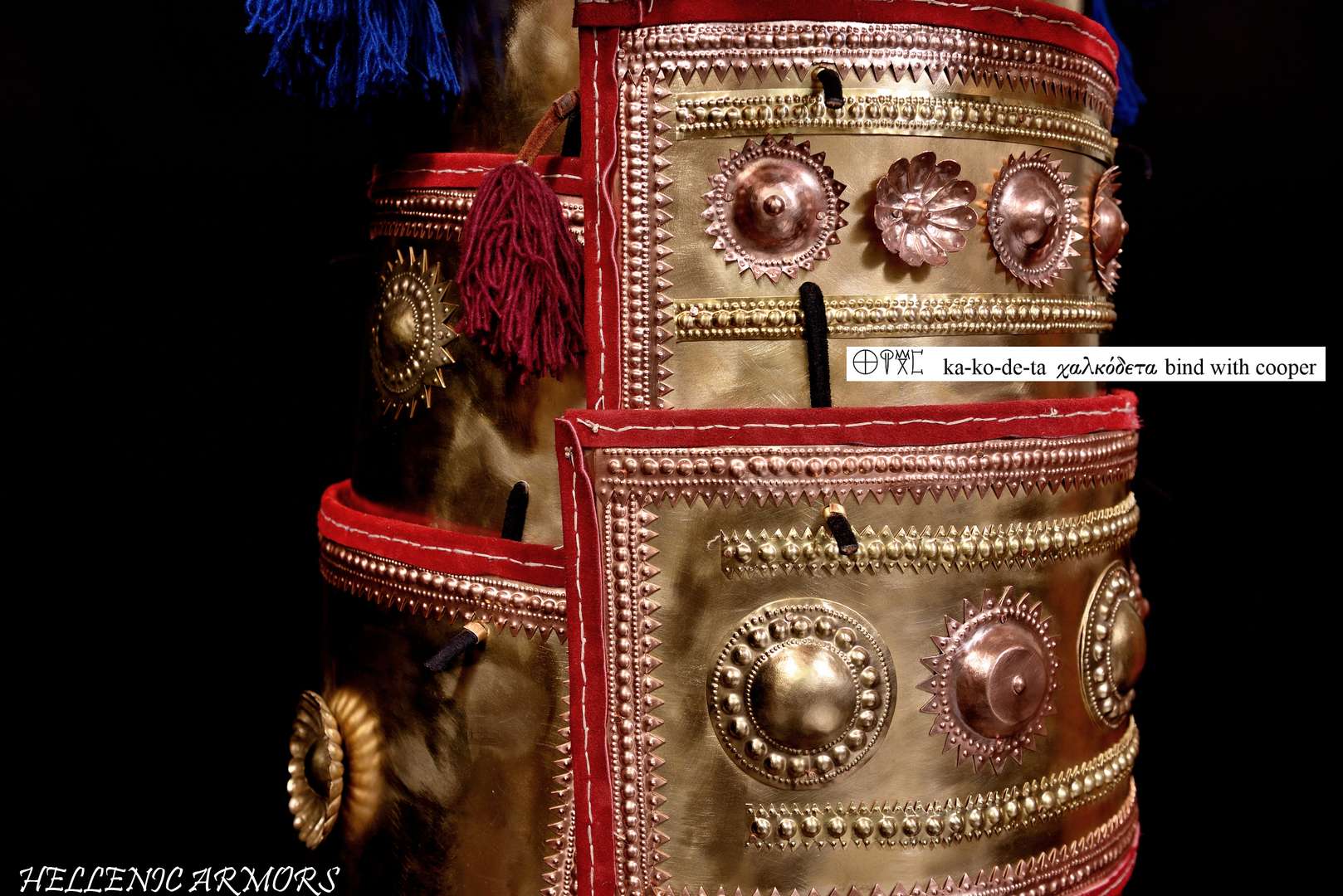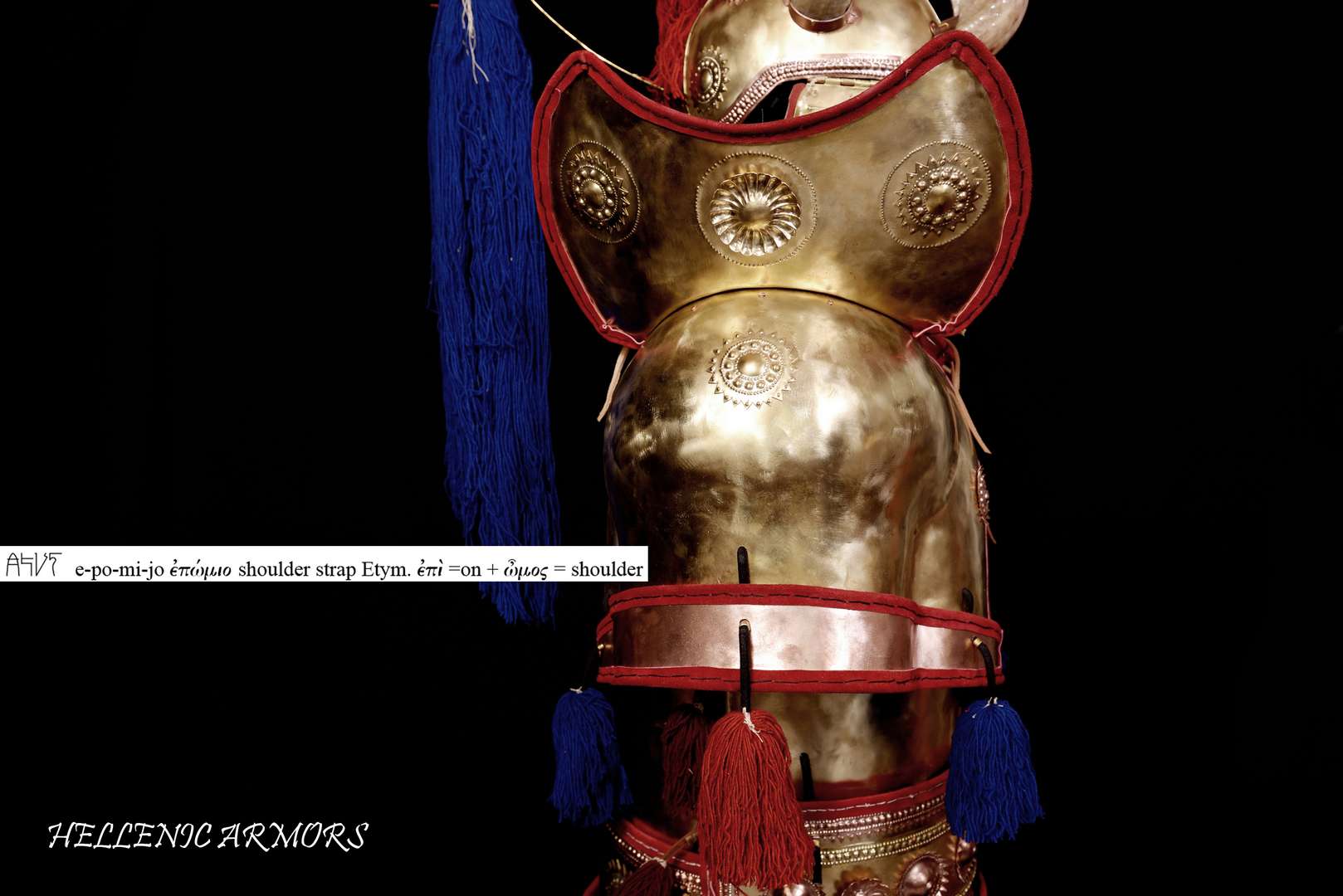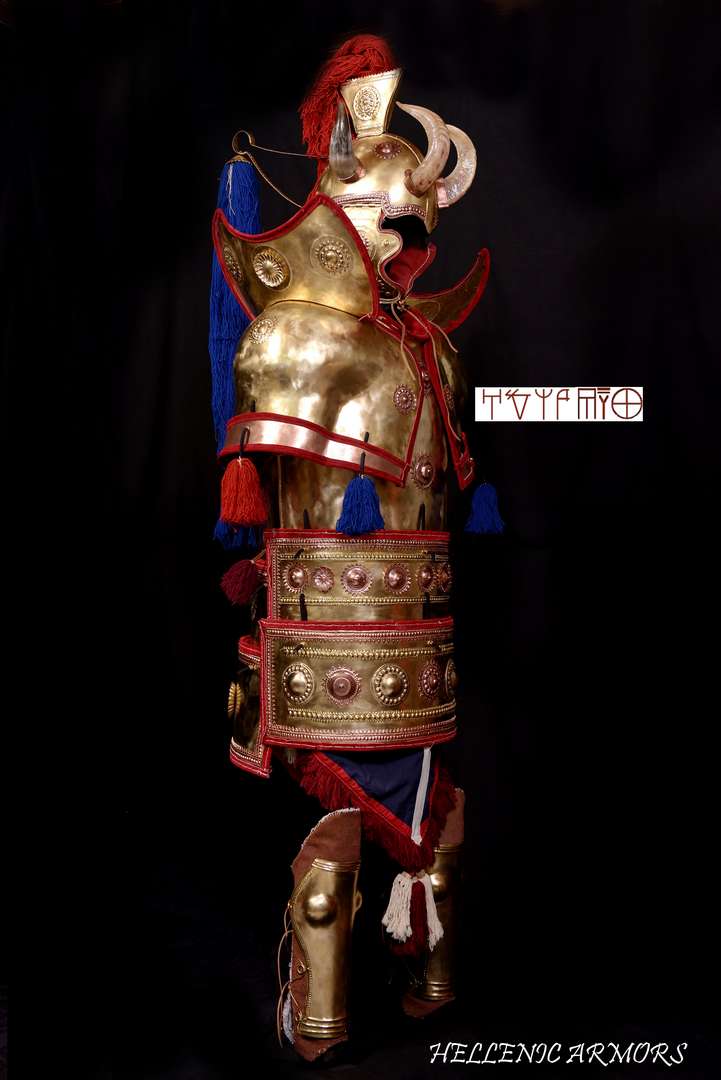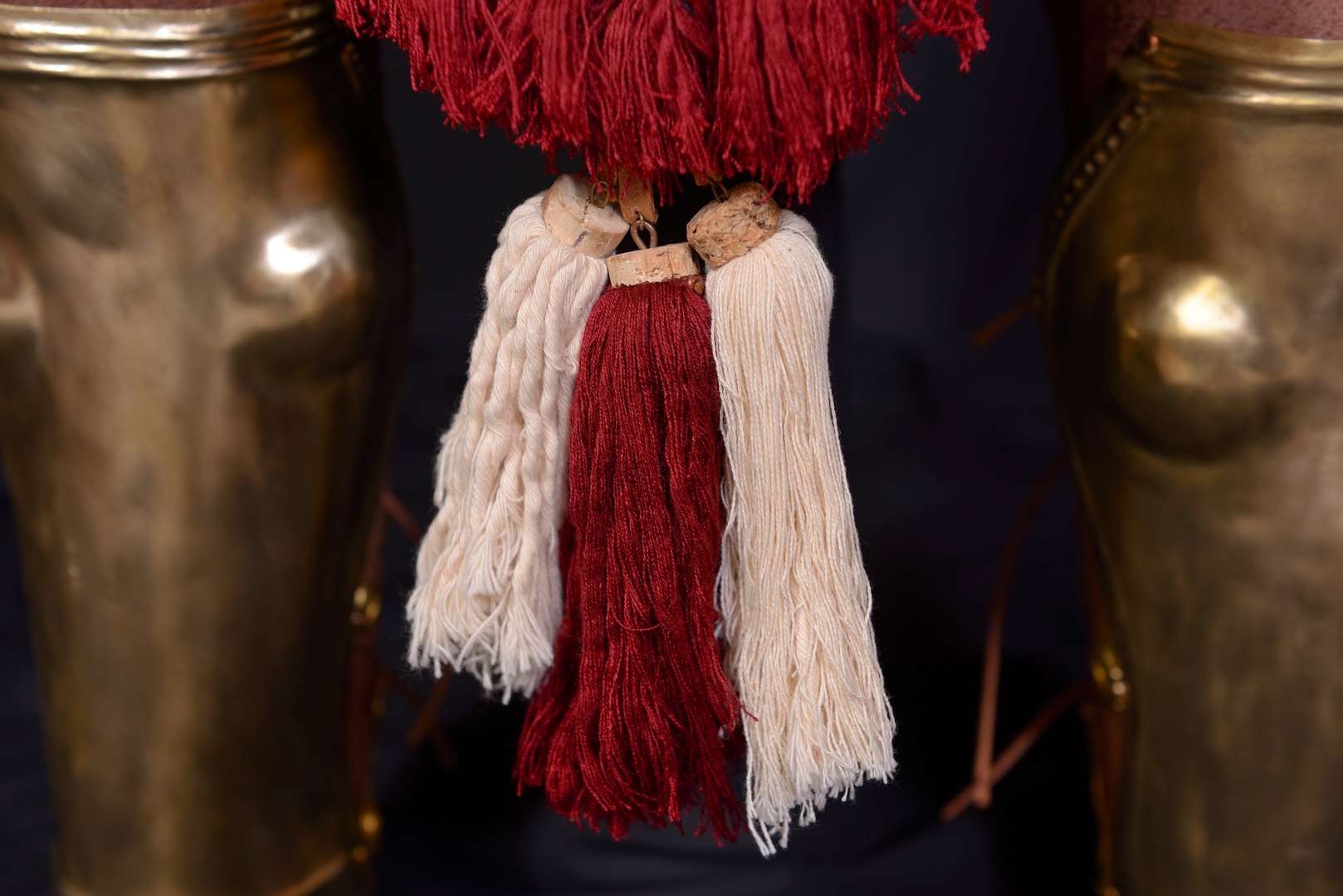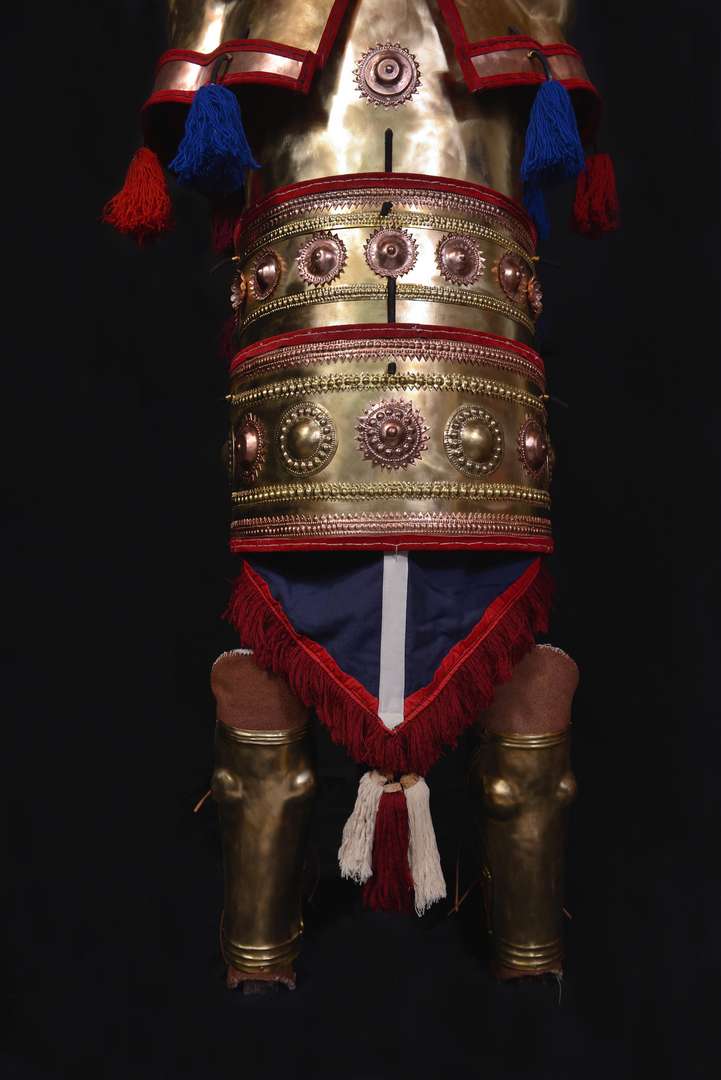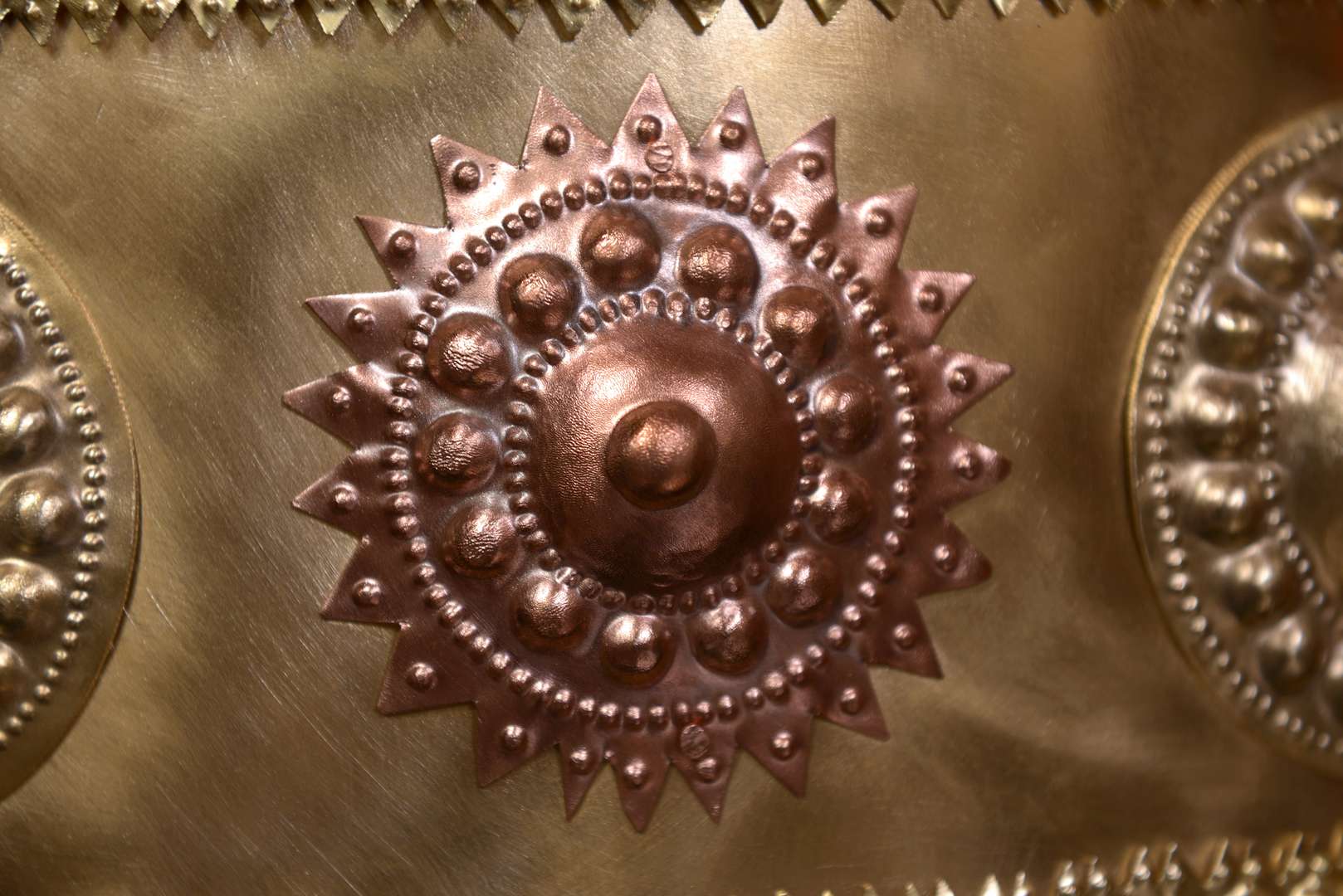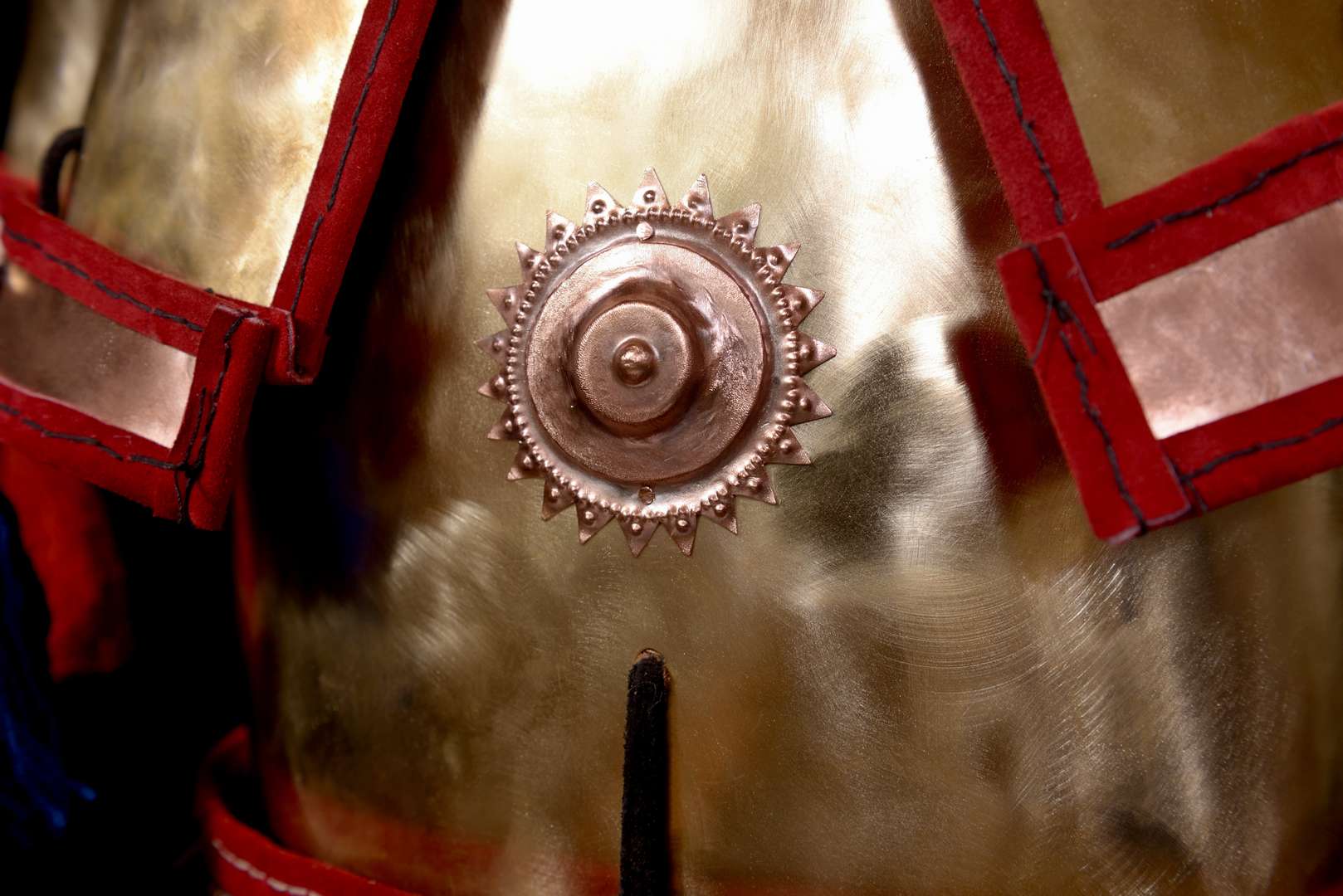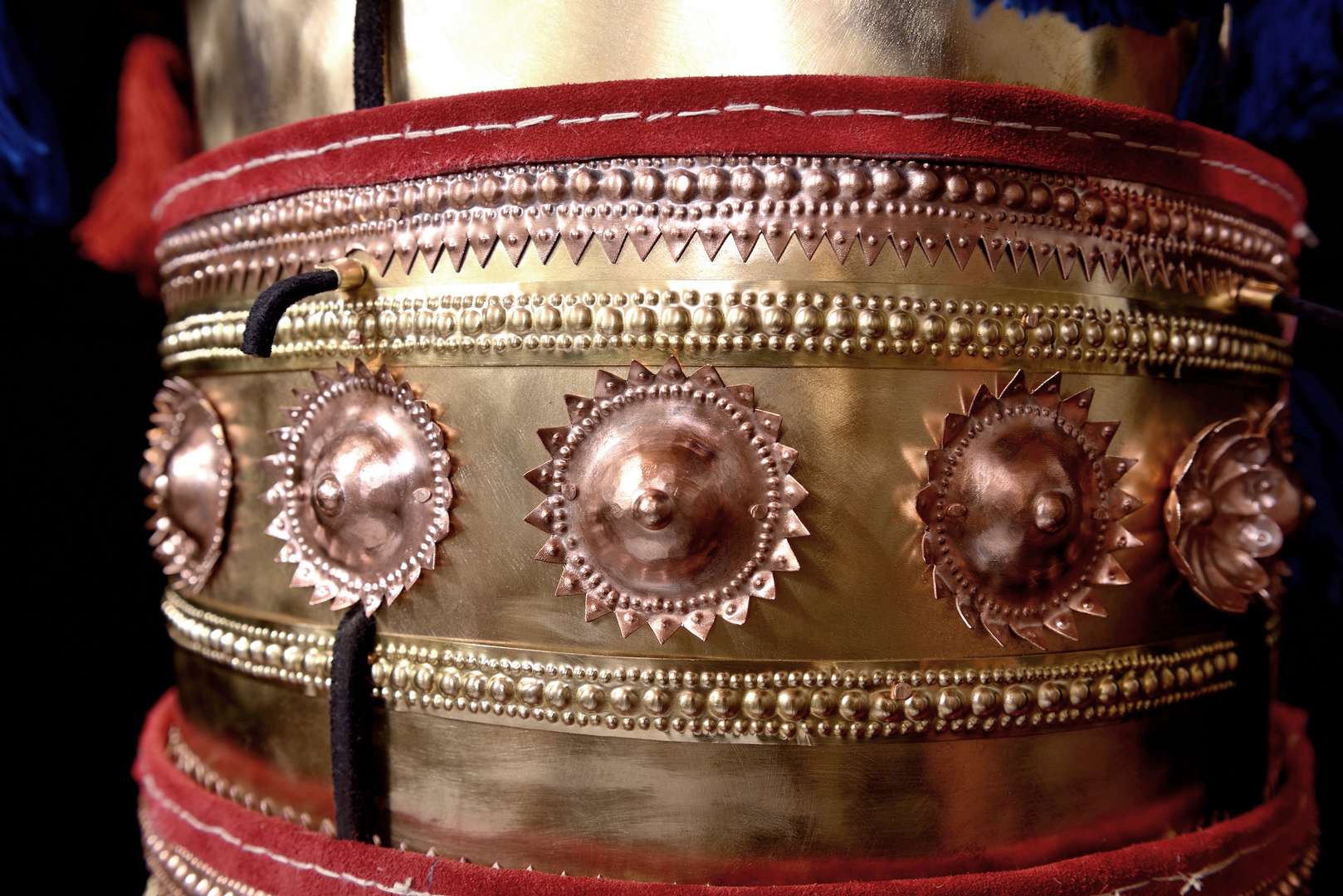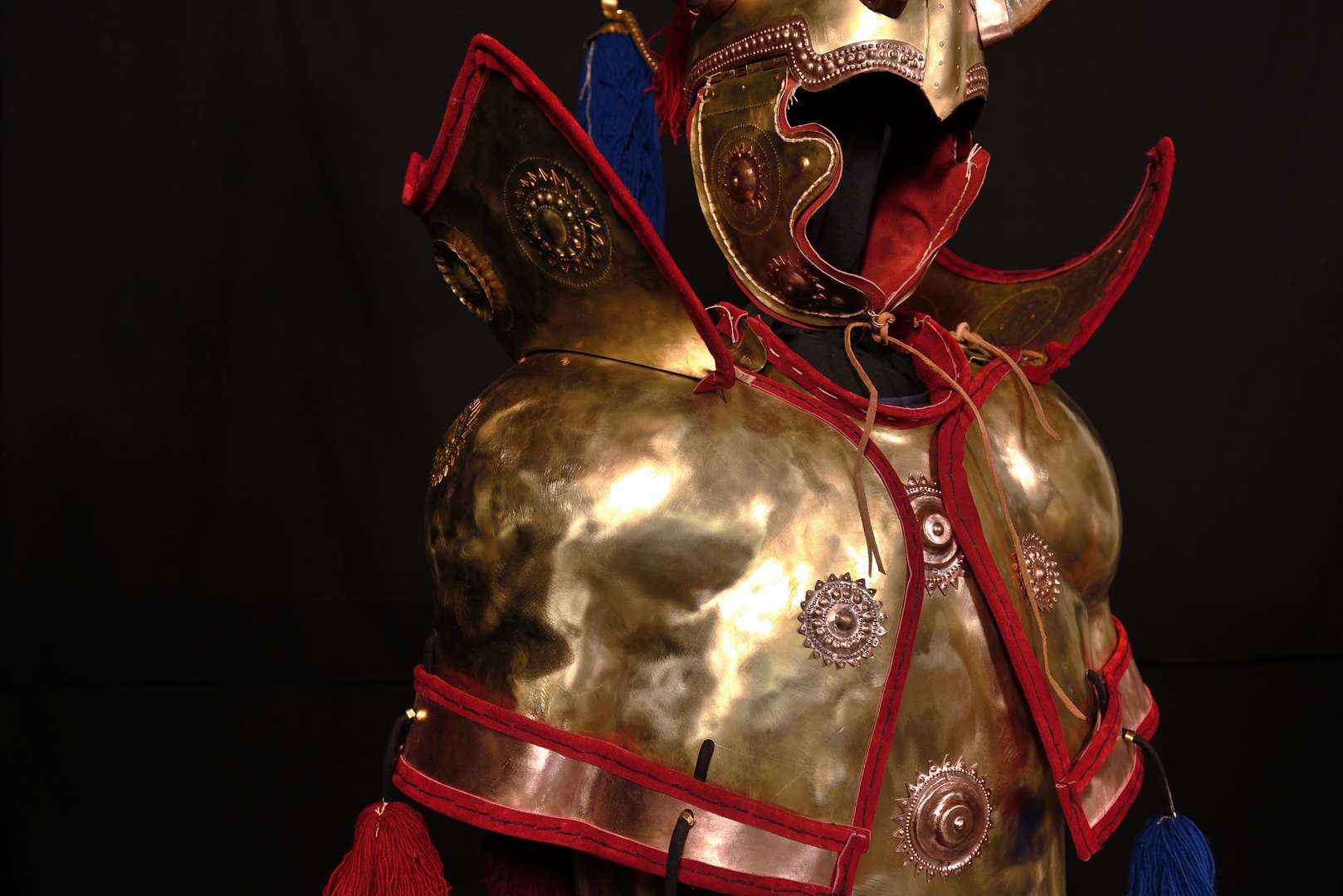Mycenaean Armor
Achilles Thorax (A version)
15th -13th century B.C
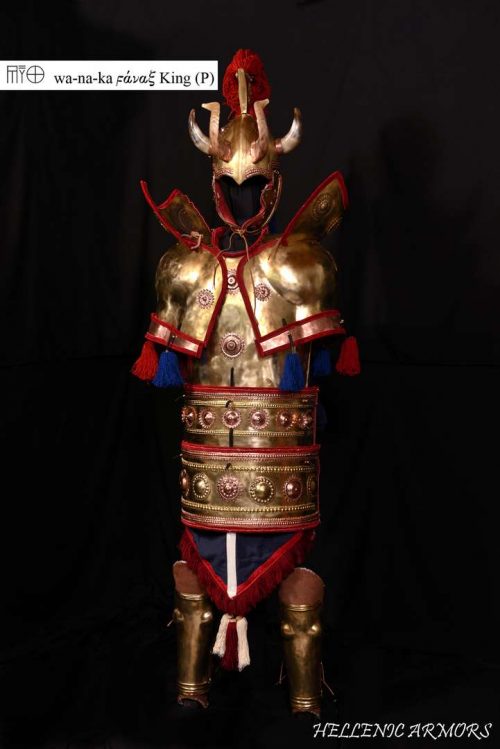
Armor plays an essential role in the Iliad plot. Homer devotes some 470 verses in his description of
Achilles’ brilliant panoply, handcrafted by Hephaestus (Vulcan) – the Greek god of fire and
metallurgy – on order from Achilles’ mother, Thetis. The Trojan War battlefield is replete with
homerian Heroes, direct descendants of powerful gods and goddesses, encased in shinning bronze
armor, fighting each other with extreme ferocity for domination. Deeds of heroism, human drama
and incidents of unspeakable cruelty coexist in a unique synthesis of poetry and philosophy in an
epic which, many years later, was to serve as lore that played a central role in the shaping of the
Western world.
For many centuries thereafter, the appearance of Achilles’ two suits of armor, as they are described
in the Iliad, inspired military leaders, sculptures, painters and writers and, in a broader sense, global
history.
The first description of Achilles’ armor.
τεῦξ᾽ ἄρα οἱ θώρηκα φαεινότερον πυρὸς αὐγῆς,
τεῦξε δέ οἱ κόρυθα βριαρὴν κροτάφοις ἀραρυῖαν
καλὴν δαιδαλέην, ἐπὶ δὲ χρύσεον λόφον ἧκε,
τεῦξε δέ οἱ κνημῖδας ἑανοῦ κασσιτέροιο.
The second set of arms of Achilles, handcrafted by Hephaestus, to meet the specifications set down
by Achilles’ mother, Thetis, for her illustrious son.
φῦσαι δ᾽ ἐν χοάνοισιν ἐείκοσι πᾶσαι ἐφύσων,
παντοίην εὔπρηστον ἀϋτμὴν ἐξανιεῖσαι,
ἄλλοτε μὲν σπεύδοντι παρέμμεναι, ἄλλοτε δ᾽ αὖτε,
ὅππως Ἥφαιστός τ᾽ ἐθέλοι καὶ ἔργον ἄνοιτο.
χαλκὸν δ᾽ ἐν πυρὶ βάλλεν ἀτειρέα κασσίτερόν τε
καὶ χρυσὸν τιμῆντα καὶ ἄργυρον·
His armor would have been more shining than a blazing fire (Iliad. XVIII, 610)
ἄρα οἱ θώρηκα φαεινότερον πυρὸς αὐγῆς…
The synthesis of Achilles’ panoply was based on actual archaeological findings, ancient texts,
iconography, ceramic art, Linear B’ ideograms etc, all directly associated with Bronze Age military
technology which flourished during the ‘Mycenaean Era’ as it is commonly known, or, more
accurately, the Late Helladic period (1600-1050 BC). Natural materials such as linen, leather,
bronze, copper and tusks or horn were all used in its construction while the bronze muscled cuirass
of the torso used exlusively hammering techniques as adopted from Hephaestus himself and his
divine workshop.
Τhe torso and the shoulder guards of the armor (To-ra-ke in Linear B’, Thorax in classical Greek)
has been based on the Dendra Armor, a unique archaeological find on display at the Archaelogical
Museum in Nafplion. The cuirass consists of two hammered anatomical bronze sheet plates, the
front and the dorsal piece allowing large openings for the arms and neck, fastened together with six
pairs of Π-shaped locking fasteners (at the armpit and neck). The breastplate hangs a few
centimeters lower than the back and bears two star-like copper decorations (probably a heraldic
emblem of Achilles’ first panoply, mentioned by Homer) based on artistic examples of this era.
Each of the curved pauldrons (shoulder guards) consists of three pieces and its design is also based
on the Dendra Armor and relevant Linear B’ ideograms. They offer sufficient protection at the
shoulder and upper arm areas.
Four horizontal lamellar plates of bronze, attached to the lower part of the cuirass with thick leather
cords, two at the front and two at the back respectively, form a wide belt protecting the thighs and
abdomen. The belt bears numerous decorative floral and star-like adornments in bronze/copper, all
copied from contemporary artistic motifs of this period.
Along all the edges/rims of the bronze plates there is a series of perforations to allow hand stiching
of the purple leather as well as the attachment of the thick woolen padding to the inner lining of the
bronze plates and belts.
The Iliad is replete with references and descriptions of helmets, a fact which reveals how important
these elements were for the whole appearance of the Hero. Quite a few verses are dedicated to the
number of decorative plumes, horse tails, colors, shapes etc. In the case of Achilles’ helmet a typical
Achaean pattern was used but with the addition of heavy decorative elements. A composite dome
made of forged bronze sheets forms the main shell of the helm with a pair of bronze cheek guards
attached to the low lateral fringes. The top of the helmet holds two pairs of natural horns and two
decorative crests, one on the centre top and one on the dorsal side. A number of star-like decorative
bronze and copper components have been attached as well in accordance with verified
archaeological findings of Mycenaean art, as a complement to the adornments of the main torso and
protective low belts.
The greaves have been based on existing archaeological findings of the Late Helladic period
(excavated at the Kouvaras site, near Amphilochia, in western Greece). They are of mixed
construction, with the protective front of bronze and the interior padding of organic material.
The shaped bronze plates have been strongly attached to a linen substratum which wraps around the
lower legs beneath the knees and is held in place by leather cords and pairs of rings.
